Top Ten Terpenes and their potential medicinal properties
- Terpenes are the chemicals which give all plants their smell and taste
- Terpenes, like cannabinoids, have shown potential therapeutic properties
- Here are our Top Ten Terpenes and the potential uses they may have in health care
Medical cannabis made national headlines in the UK last year. A lot of focus in the media was afforded to cannabinoids, the chemical compounds present in cannabis which is the main source of cannabis’ medicinal properties.
Cannabidiol (CBD) was given special attention, with the cannabinoid being fully legal and available to purchase without prescription.
Cannabinoids, however, are not the only therapeutic chemicals in the cannabis plant.
Introducing terpenes: the chemical which gives cannabis, and all plants, their distinct flavour and aroma.

Not only are terpenes responsible for cannabis’ smell and taste, they contribute to therapeutic effect cannabinoids have, working together to help potentially heal and protect the human body.
Terpenes are not psychoactive like THC, but do interact with THC and the other cannabinoids.
This relationship between phytocannabinoids and terpenes is known as the “entourage effect,” where all the individual cannabinoids (such as CBD and THC) work together with terpenes to increase the potential medical benefits cannabis can have.
Individually isolated terpenes have numerous benefits, but when they are combined with other terpenes and cannabinoids, the possibilities for medical preparations are vastly increased.
Here are our Top Ten terpenes:
Limonene
Limonene is one of the most common terpenes found in cannabis. It’s also found in citrus.
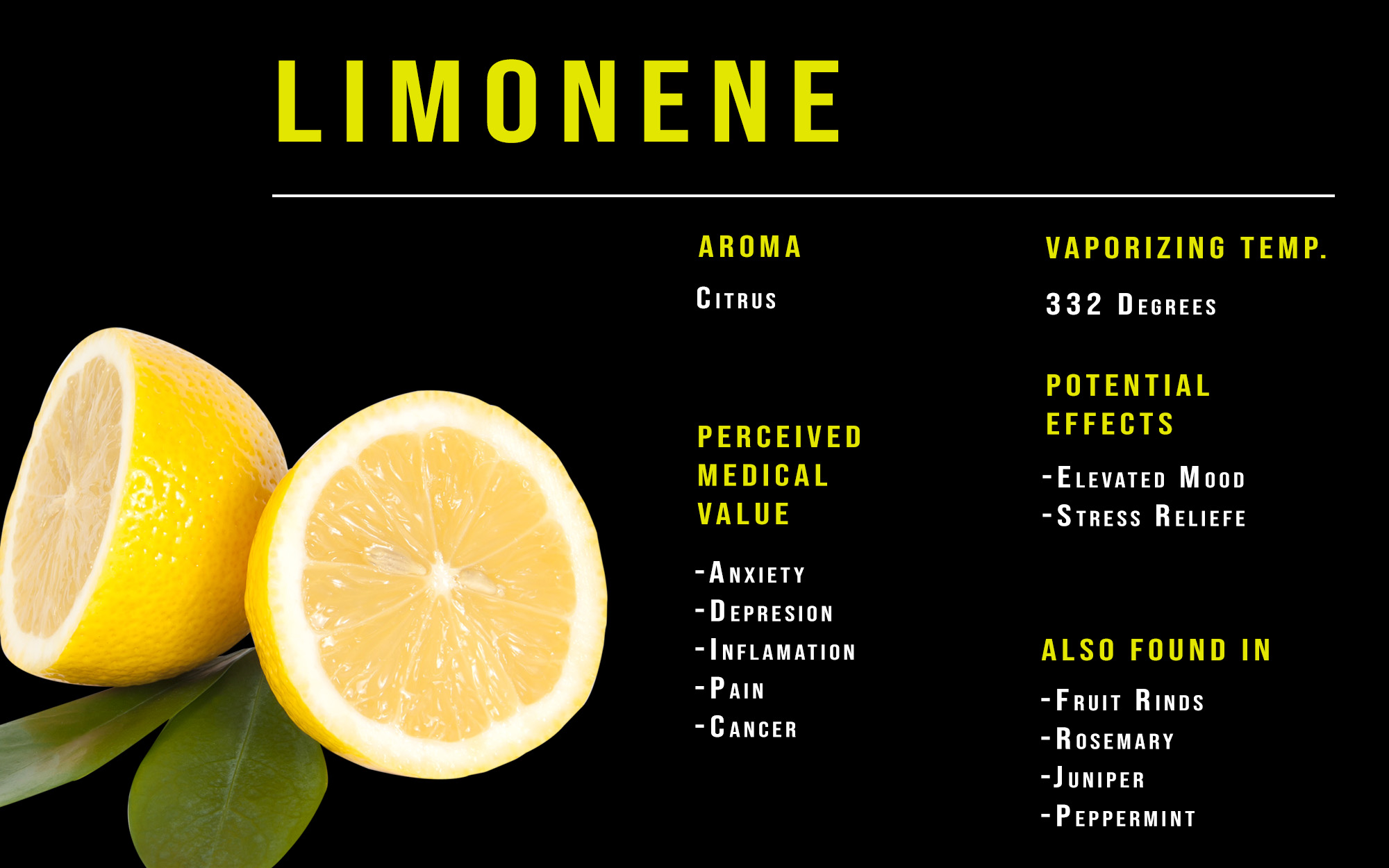
Research has shown Limonene to have potential anti-anxiety, anti-insomniac and even antibacterial properties.
Japanese researchers found that inhaling limonene vapour increases the levels of dopamine and serotonin in key regions of the brain associated with anxiety, depression, and OCD.
A recent study found that Limonene may even be able to be used in the treatment of breast cancer.
Another study found that due to its blood pressure increasing properties, Limonene “should be considered as a promising lipid lowering agent and antioxidant activities with blood pressure-lowering properties.”
Limonene is common in:
- Super Lemon Haze
- Durban Poison
- Jack Herer
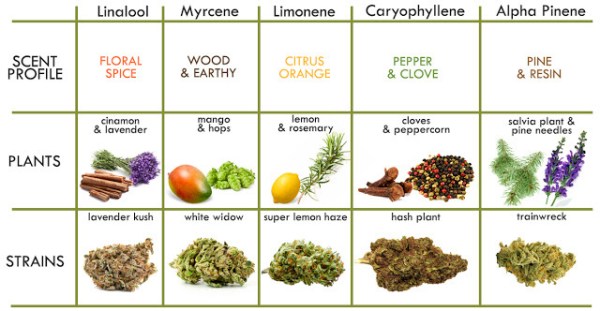
Myrcene
Myrcene is the most common terpene found in cannabis. β-Myrcene is found in mango, hops, lemongrass, bay leaves, eucalyptus, among countless other plants.
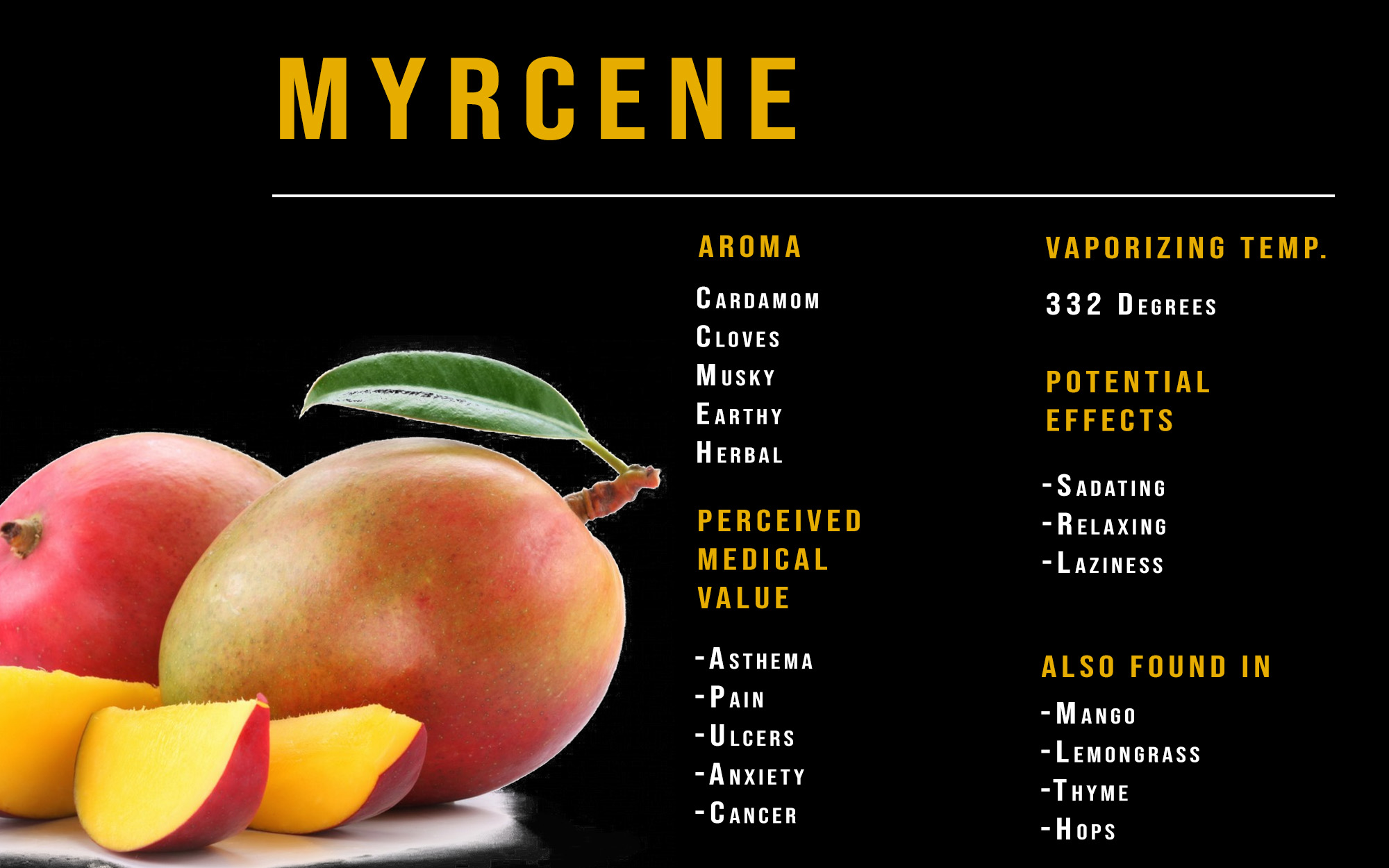
It’s believed that this terpene is responsible for determining whether a strain is indica or sativa.
A cannabis testing facility, Steep Hill Labs, have suggested that strains low in myrcene (less than 0.5%) will be sativa, whereas those with over 0.5% myrcene are categorized as indica and typically deliver symptoms that include appetite stimulation and “couch lock.”
According to the laboratory:
“If a sample has over 0.5% myrcene, it will have indica, or “couchlock” effects.
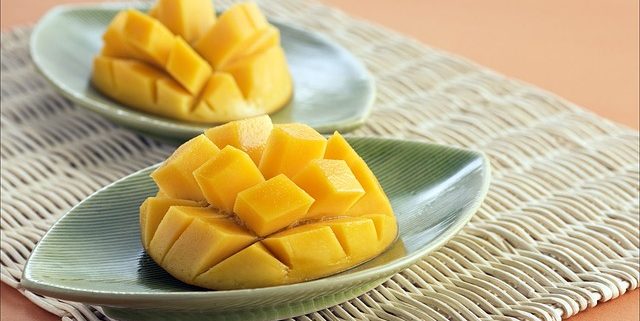
“If a sample has less than 0.5% myrcene, it will have the soaring sativa effect. It is simply the amount of myrcene that is in the sample that dictates how [one] will be affected.”
Myrcene is actually one of the most widely used chemicals by the perfume industry.
Researchers at the University of Coimbra found that “myrcene has significant anti-inflammatory and anti-catabolic effects.”
A GW Pharmaceuticals study found “great promise” for myrcene in use for pain relief.
Researchers in Brazil found that myrcene has a variety of sedative effects in rodents, inducing sleep, reducing motor coordination and suppressing locomotor activity, indicating strains heavy in myrcene can be used as a sedative.
Interestingly, myrcene has been found to have increase the permeability of cell membranes, allowing THC to reach brain cells easier and quicker.
Strains heavy in myrcene include:
- White Widow
- Kush
- Skunk
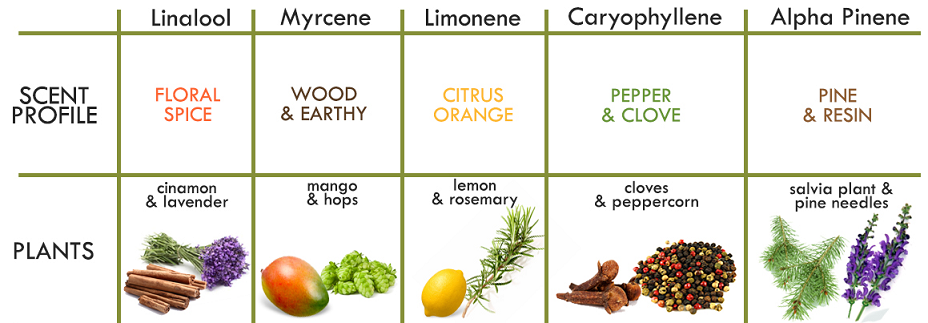
Linalool
Linalool is probably most well-known for its lavender aroma.
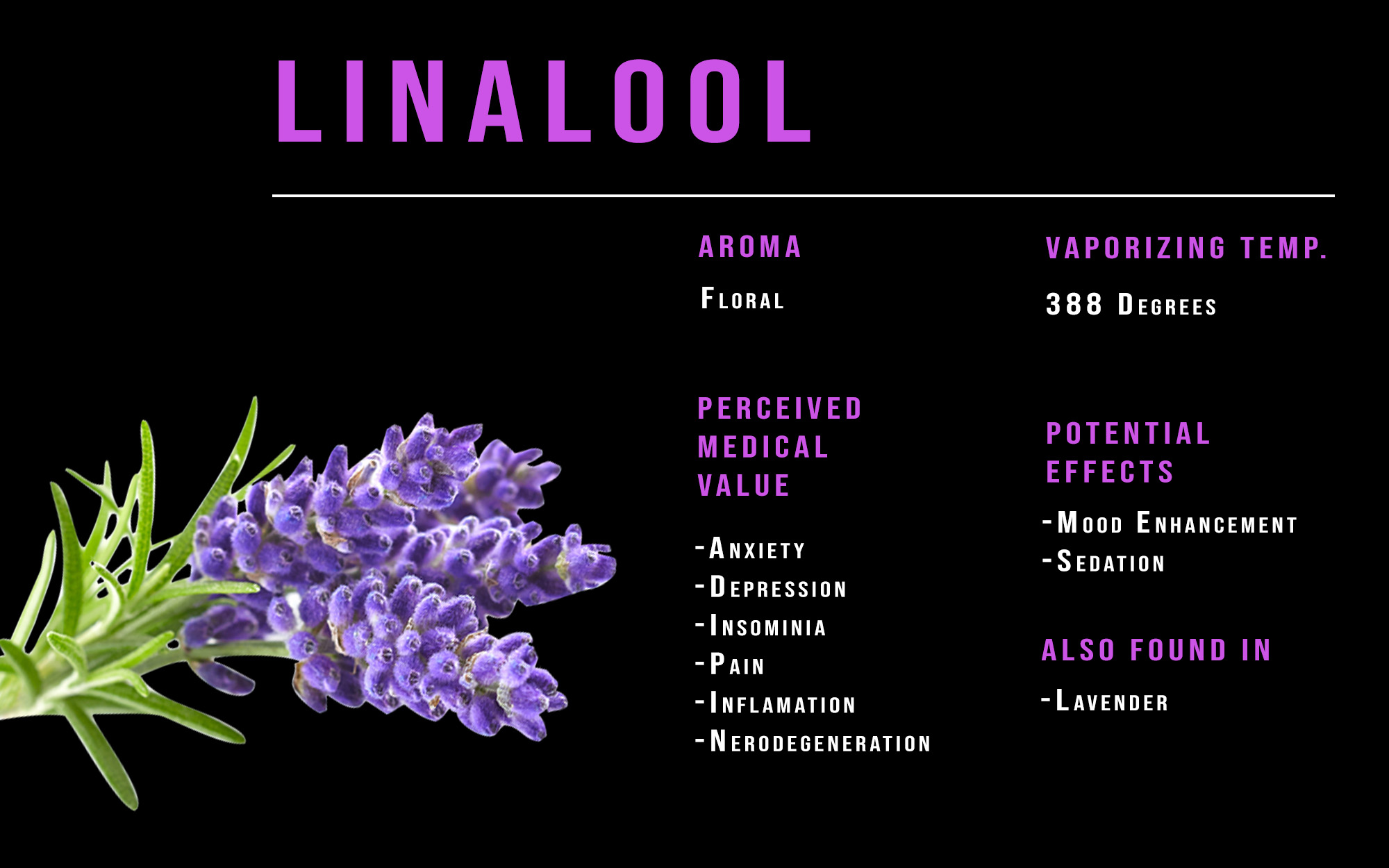
One of Linalool’s most common uses is to reduce stress and anxiety, due to its sedative and soothing properties.
Japanese researchers were able to bring down elevated stress levels in the immune system in lab rats “near-normal” after allowing the rats to inhale linalool extract.
Strains high in linalool may be ideal for epileptic treatments.
Research published in Neurochemical Research found that:
“Psychopharmacological in vivo evaluation of Linalool showed that this compound has dose-dependent marked sedative effects at the Central Nervous System, including hypnotic, anticonvulsant and hypothermic properties.”
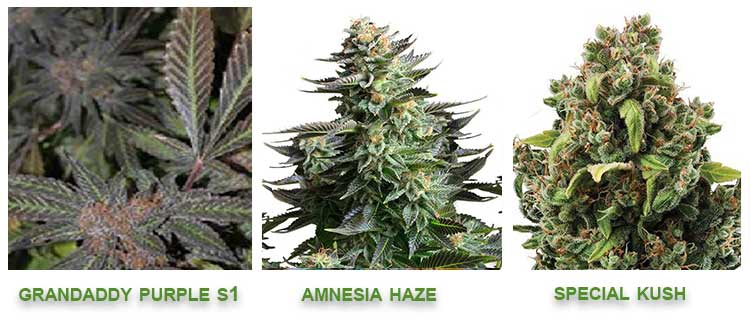
Research is now being conducted to investigate linalool’s potential use in cancer treatments.
Strains high in linalool include:
- LA Confidential
- Amnesia Haze
- Purple Kush
Humulene
Humulene (Beta-caryophyllene) is found in the essential oil of oregano, black pepper and clove, carrying a subtle woody, earthy aroma with spicy herbal notes.
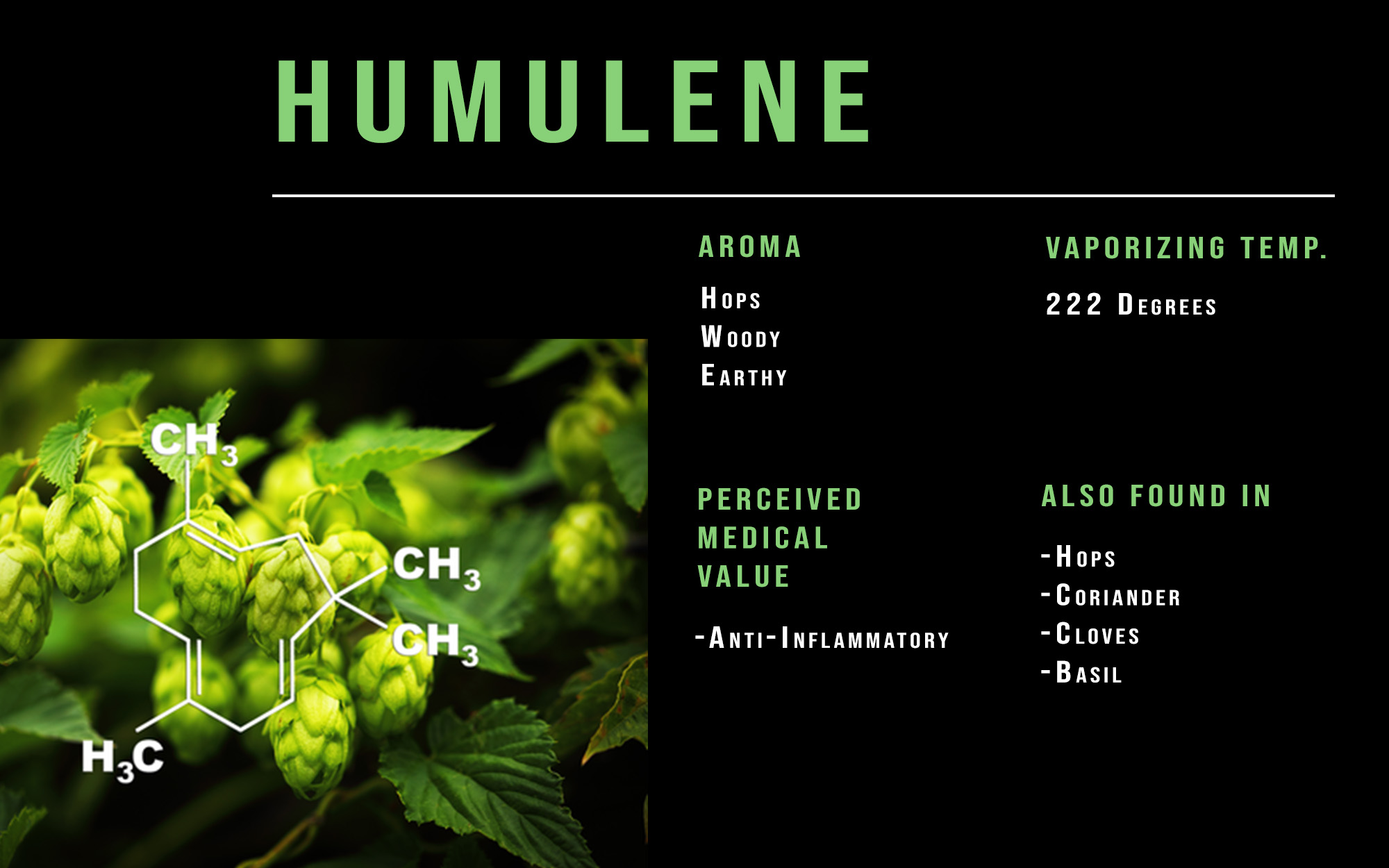
While cannabis is more commonly associated with appetite simulation, due to humulene’s close biogenic relationship with caryophyllene, humulene is actually known to suppress hunger.
As caryophyllene is often associated with gut health, humulene can act as an appetite suppressant when highly present in cannabis.
A Brazilian study examined humulene’s systemic anti-inflammatory and antinociceptive properties, finding it may have great potential as an anti-inflammatory.
Research in Canada found humulene to have both anti-bacterial and gastro-protective properties.
Strains high in humulene include:
- Sour Diesel
- Girl Scout Cookies
- White Widow
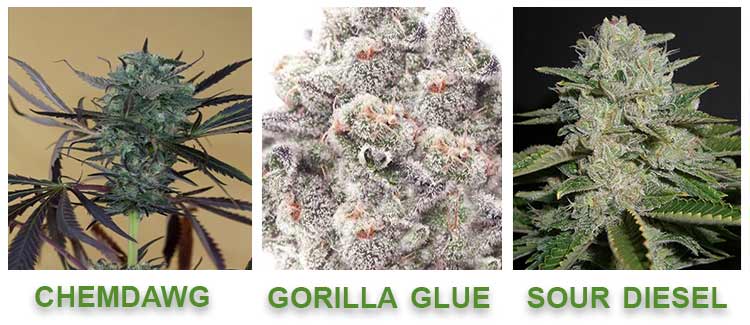
Pinene
There are two structural isomers of pinene found in nature: α-pinene, found in pine (and most conifers) and rosemary, and β-pinene which naturally occurs in rosemary, parsley, and basil.
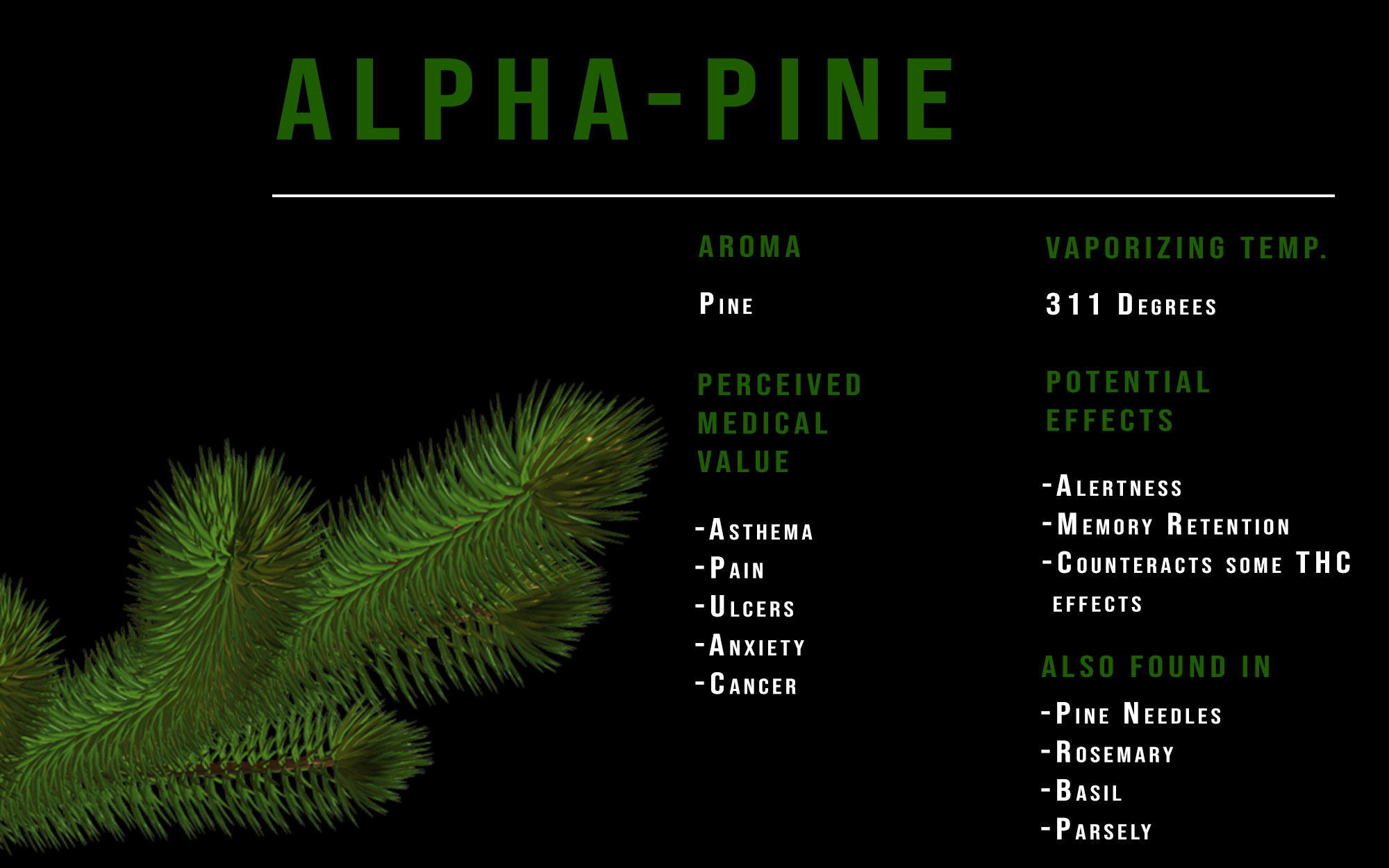
Studies have shown that pinene enhances memory and boosts learning by blocking a chemical called acetylcholinesterase from breaking down acetylcholine.
Acetylcholine is an important neurotransmitter that helps neurons relay signals related to attention, motivation, as well as memory and arousal. This neurotransmitter also facilitates the movements of skeletal muscles.
Like CBD, pinene is known for its acetylcholinesterase inhibitory activity, which can potentially counteract the negative effects of THC, such as psychotic episodes, by allowing brain cells to communicate better with each other.
Strains high in pinene include:
- Jack Herer
- Blue Dream
- OG Kush
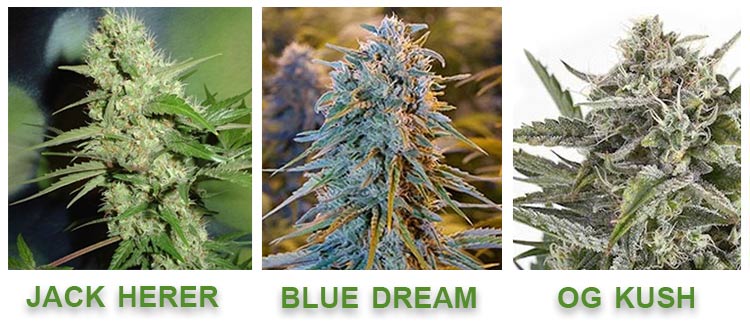
Borneol
Borneol is most commonly found in absinthe, cinnamon, and rosemary, carrying a has a fresh, minty camphor aroma.

The terpene has been used a traditional Chinese medicine dating back centuries, commonly used in acupuncture or as part of oral or skin treatments.
Research has shown borneol to help reduce inflammation. Results from a study which investigated cell-culture models of gingivitis suggest that borneol could be added to medicated mouthwash in order to ease conditions such as red gums or tonsilitis.
Chinese and American researchers found that borneol applied topically could be used to sooth aching muscles and joints, acting as a topical pain reliever.
A 2014 study found borneol could potentially reduce the risk of blood clots.
Perhaps most interestingly, borneol is now being investigated as an aid to the absorption of medical compounds, including those that treat cancer.
While borneol doesn’t kill cancer cells, it helps other molecules get to them and cause them to self-destruct.
Strains high in borneol include:
- Most varieties of haze
Eucalyptol
Eucalyptol is the terpene responsible for the pleasurable and cooling scents found within eucalyptus, mint and rosemary.

A 2012 study tested eucalyptol (cineol)’s effect on memory and mood, with a particular interest in whether the terpene could be used to treat Alzheimer’s.
A positive correlation was found between the number of correct answers and higher blood levels of eucalyptol, with the researchers concluding that the terpene may help contribute towards improved cognition, possibly easing some symptoms experienced with the onset of Alzheimer’s disease.
Research in Iran revealed the terpene to be effective against certain strains of bacteria, indicating its potency as an antibacterial.
Eucalyptol may also serve as an effective therapeutic when it comes to asthma.
Research published in the Journal of Asthma in 2012, found that eucalyptol can aid improvement in lung function, even showing potential to reduce dyspnea in asthma patients.
Strains high in eucalyptol include:
- Headband
- Bubba Kush
- Girl Scout Cookies
- Super Silver Haze
Delta-3 Carene
Delta-3 carene is beholden to a sweet and earthy aroma with piney undertones, most commonly known as the main component of turpentine.

Commonly found in the resin of rosemary, pine, and cedar, carene is widely considered a natural antihistamine. Delta-3 carene contains a subtle lemon flavour.
This terpene may actually be the element in cannabis which causes users “cotton mouth” and redness in the eyes.
Aside from clearly identifying cannabis users, Delat-3 carene may also be an effective contributor towards combating fibromyalgia, arthritis, and osteoporosis, as well as possibly promoting memory retention and mental sharpness.
Strains high in Delta-3 carene include:
- Haze (Super Silver, Super Lemon)
- Skunk
Pulegone
Pulegone can primarily be found in mint species, camphor, and rosemary. In cannabis, the terpene count of pulegone is normally at a far lower concentration than other terpenes.
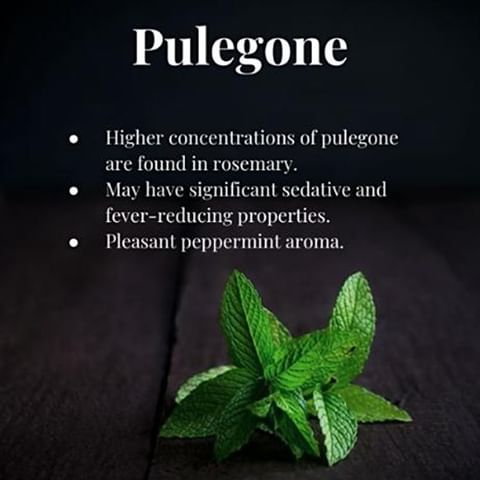
In very high concentrations, pulegone can actually have negative effects on the body, particularly on the liver.
Research has found Pulegone to be a good acetylcholinesterase inhibitor, preventing the action of the protein which destroys acetylcholine.
Acetylcholine is an important chemical needed to store memories in the brain. Without it, it is impossible to form and retain new memories.
Like pinene and CBD, pulegone can help prevent some of the negative side effects of cannabis, such as THC-induced memory loss.
No strains of cannabis are high in pulegone due to its potential carcinogenic properties in high doses.
Terpineol
Terpineol occurs naturally in over 150 plants, with hints of a lilac aroma, often found in cosmetics and perfumes.
Research has shown that due to terpineol’s anticholinergic properties, it a promising candidate drug for the treatment of diarrheal diseases.
Most importantly, a-Terpineol, a component of terpineol, has shown promise anti-cancer properties, and “could be used in the prevention or even treatment of cancer, as it was found that α-T demonstrated a potential antioxidant capacity effect against different human cancer cell lines (breast, lung, prostate, ovarian and leukemia).”
Strains high in terpineol include:
- Jack Herer
- Girl Scout Cookies
- White Widow
- OG Kush
